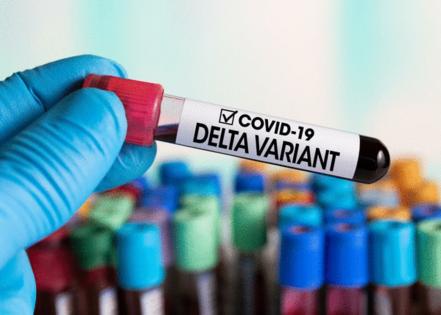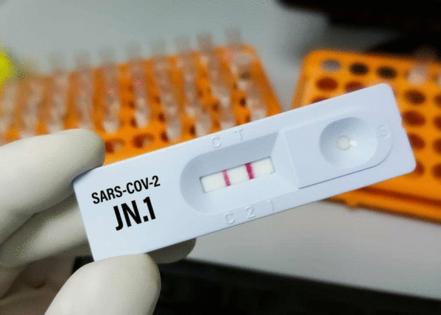The major COVID variants we've seen so far and which one to look out for right now
Published in Slideshow World
Subscribe
The major COVID variants we've seen so far and which one to look out for right now
The COVID-19 pandemic was the third leading cause of death globally in 2020 and the second in 2021, according to a recent World Health Organization report. The almost 13 million lives lost during those years opened peoples' eyes to the way viruses can mutate or change. Words such as 'variant,' 'subvariant,' and 'strain' became part of the lexicon.
All viruses, including SARS-CoV-2, which causes COVID-19, acquire mutations over time as they spread. Some mutations do not change any characteristics of the virus. Other mutations, however, change how easily the virus spreads, the severity of the disease it can cause, and its sensitivity to vaccines. When the new properties significantly differ from those of a previously detected virus, the new virus type is known as a variant. A strain is a variant with enough mutations to dramatically change its characteristics compared to the parent virus.
The WHO classifies emerging SARS-CoV-2 variants as 1) variants under monitoring, with mutations that may affect the virus's ability to spread and cause severe illness, but more evidence is needed; 2) variants of interest, with mutations that are known to affect their transmissibility and the severity of the illness they cause; and 3) variants of concern, which are variants of interest known to cause more severe illness with low sensitivity to available vaccines.
In May 2021, the WHO began assigning Greek letters to SARS-CoV-2 variants to help guide public discussion of the virus.
Stacker examined how SARS-CoV-2 has evolved since 2020 and consulted research from experts at Yale Medical School, the U.S. Centers for Disease Control, and the World Health Organization to identify the major variants that have emerged and the efficacy of vaccines against the newer variants.
Visit thestacker.com for similar lists and stories.
Alpha (B.1.1.7)
The first highly publicized variant of the SARS-CoV-2 virus was called alpha (B.1.1.7). The variant began circulating in Great Britain in late 2020. Alpha spread worldwide, including to the U.S., where the CDC labeled it a variant of concern.
Scientists believe mutations in the virus' spike protein, which it uses to infect cells, made it 30% to 50% more infectious than the original strain of SARS-CoV-2. The CDC reported that 66% of COVID-19 cases between April 11 and 24, 2021, were caused by the alpha variant. Pfizer-BioNTech, Johnson and Johnson, and Moderna said their vaccines prevented severe illness and hospitalization in COVID-19 cases caused by the variant. Alpha eventually receded, however, and the delta variant replaced it.
Beta (B.1.351)
The beta variant first surfaced in South Africa at the end of 2020 and spread to other countries. This variant was uncommon in the U.S. Scientists were concerned about its ability to evade detection and eradication by antibodies.
The CDC said beta was about 50% more contagious than the original strain of SARS-CoV-2. Some evidence suggested the beta variant was more likely to cause hospitalization and death than other variants. Early in 2021, South Africa stopped offering the AstraZeneca-Oxford vaccine when clinical trials found it provided inadequate protection against moderate to severe COVID-19 caused by the beta variant.
Delta (B.617.2)
First identified in India in late 2020, the delta variant soon spread across the globe. It became the dominant variant of SARS-CoV-2 until the emergence of omicron in December 2021.
Delta is thought to have caused more than twice as many infections as previously circulating variants. The emergence of the delta variant coincided with a rapid spike in the number of COVID-19 cases in the U.S. beginning in June 2021. Surges in cases in the fall of 2021, even in states with the highest vaccination rates, prompted scientists to urge people to get a booster shot.
Delta caused more severe disease in unvaccinated people than other variants. A study published in 2022 in The Lancet Infectious Diseases found that between March 29 and May 23, 2021, people in England infected with the delta variant had twice the risk of hospitalization as those infected with the alpha variant, the previously dominant variant in the country.
All three vaccines available in the U.S. prevented severe illness, hospitalization, and death from the delta variant. Delta also prompted the CDC to recommend what it called layered prevention strategies for both vaccinated and unvaccinated people, including keeping up to date with booster shots, hand washing, practicing social distancing, and wearing a mask.
Although the basic symptoms of COVID-19, such as fever, chills, and fatigue, remain the same, coughing and loss of smell became less common with the delta variant.
Omicron (BA.1, EG.5, BA.2.86)
Omicron was the predominant variant circulating in the U.S. between late 2021 and 2023. It was first identified in late 2021 in Botswana and South Africa and quickly spread to other countries. Although the original Omicron variant BA.1 stopped circulating, a number of subvariants emerged.
The subvariant EG.5, or eris, was the dominant subvariant in the U.S. in 2023. Another subvariant also emerged called BA.2.86, or pirola. Omicron subvariants were thought to be particularly contagious, which scientists believe to be the result of mutations in the virus' spike protein. According to the CDC, staying up to date with SARS-CoV-2 vaccination was considered the best way to prevent hospitalization and severe illness caused by EG.5 and BA.2.86.
Omicron symptoms are similar to those of a cold, such as a runny nose and sore throat.
JN.1
TheJN.1 variantwas a descendant of the omicron subvariant BA.2.86. It was identified in September 2023 and spread throughout the U.S. JN.1 had one or two additional mutations on the spike protein, allowing it to spread more efficiently. By November 2023, it was believed to have caused 60% of COVID-19 cases in the U.S. JN.1 was not thought to cause more severe disease or different symptoms, however, compared to previous omicron variants.
FLiRT (KP.1.1, KP.2, and KP.3) and LB.1
FLiRT variants are subvariants of omicron and were responsible for most COVID-19 cases in the U.S. by the beginning of July 2024. The KP.1 and KP.2 strains of FLiRT are the dominant strains of the virus circulating in the U.S. this autumn. These subvariants are called FLiRT and have two additional mutations on their spike proteins. These mutations may make it easier for the virus to evade immunity that people may have from a previous SARS-CoV-2 infection or a vaccine.
LB.1 emerged in June 2024 and is similar to the FLiRT subvariants except for an additional mutation. Experts like Scott Roberts, Yale Medicine's infectious diseases specialist, think LB.1 and KP.2.3 may be more transmissible, although more studies are needed to confirm this theory.
XEC
XEC is a new SARS-CoV-2 strain that emerged in Germany in June 2024 and rapidly spread throughout Europe. What makes XEC unique is that it is a recombinant strain, a hybrid of omicron subvariants KP.3.3 and KS.1.1. It also has one additional mutation in its spike protein compared to KP.3.3 and KS.1.1., although researchers don't know if that makes XEC more easily transmissible than other strains.
As of mid-October 2024, 10.7% of SARS-CoV-2 infections in the U.S. were caused by XEC, making it the second most prevalent viral strain in the country. That was far behind the omicron subvariant KP.3.1.1, which accounted for 57.2% of infections.
The newly updated mRNA vaccines from Pfizer and Moderna, which target KP.2, the dominant strain last spring, and the Novovax vaccine, which targets JN.1, should be effective against XEC.
Story editing by L.C. De Shay. Copy editing by Kristen Wegrzyn. Photo selection by Clarese Moller.














Comments